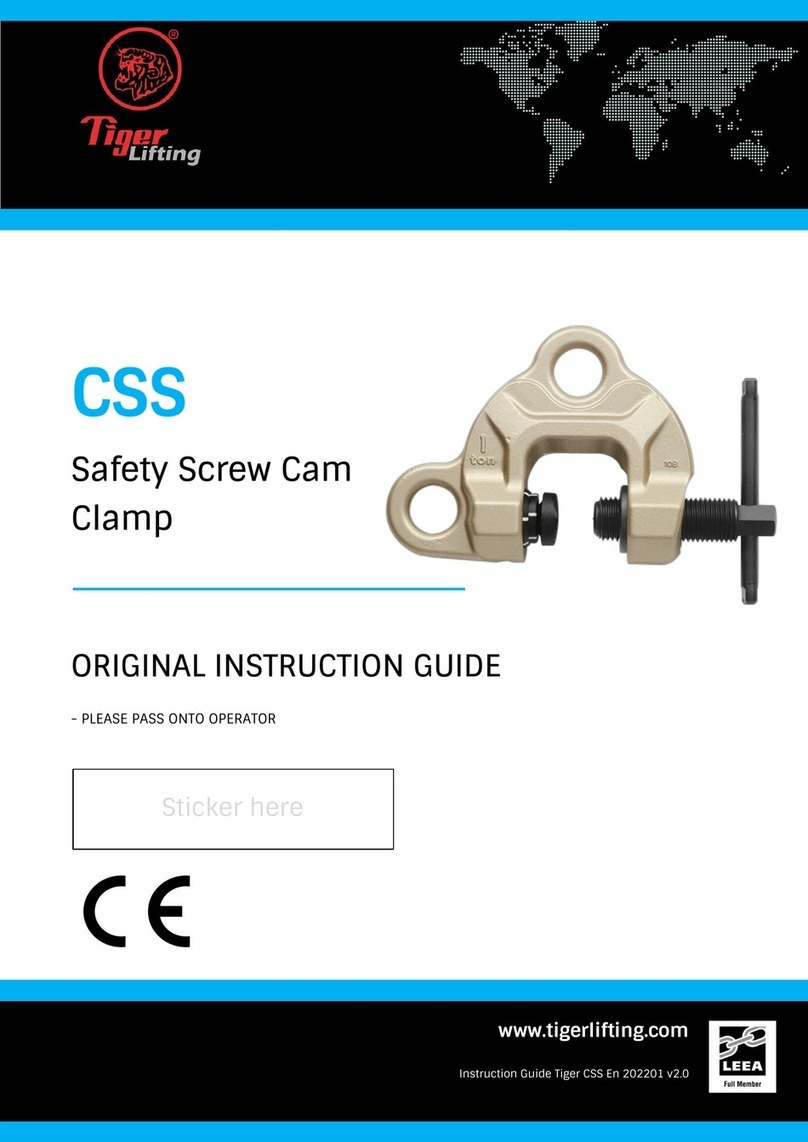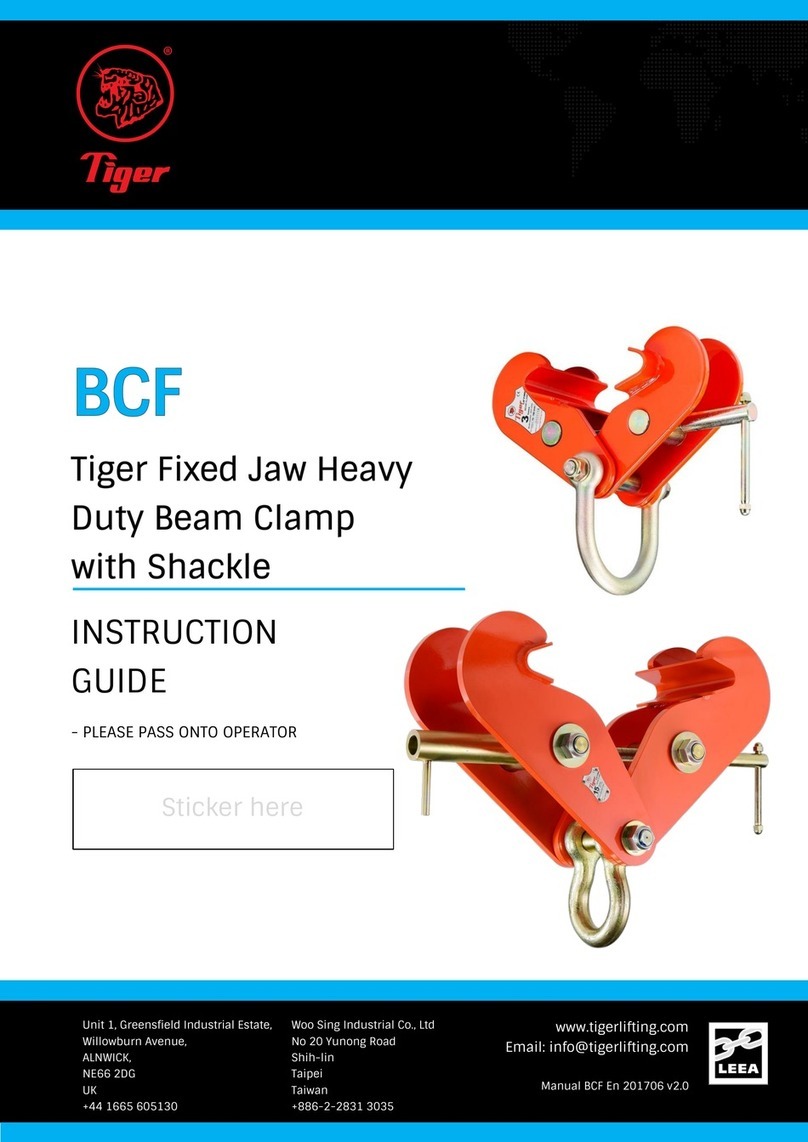7. Product Warranty and Warnings
Definitions
'Customer' means the individual, firm, company or other party with whom the Company contracts;
'Company' means Tiger Lifting UK Limited or Woo Sing Industrial Co., Ltd;
‘Contract’ the contract between the Company and the Customer for the sale and purchase of this product;
‘Defective Goods’ goods, parts or materials, which by reason of fault or incorrect design or workmanship, are found to be defective or fail or are
unable to perform in accordance with a Contract;
One Year Limited Warranty
The Company makes every effort to assure that its products meet high quality and durability standards and extends the following warranty to the
Customer of new products manufactured by the Company:
1. The Company warrants that this product, when shipped, shall be free from defects in materials and workmanship under normal use and
service and the Company shall, at its election, repair or replace free of charge any Defective Goods, provided that all claims for defects
under this warranty shall be made in writing immediately upon discovery and, in any event, within one (1) year from the date of purchase
of this product by the Customer and provided, further, that Defective Goods shall be kept for examination by the Company or its authorised
agents or returned to the Company or an authorised service centre upon request by the Company.
2. The Company does not warrant components of products provided by other manufacturers. However to the extent possible, the Company
will assign to the "Purchaser" applicable warranties of such other manufacturers.
3. Except for the repair or replacement mentioned in (1.) above, which is the Company’s sole liability and Customer's exclusive remedy under
this warranty, the Company shall not be responsible for any other claims arising out of the purchase and use of this product, regardless of
whether the Customer's claims are based on breach of contract, tort (including negligence), breach of statutory duty, or otherwise,
including claims for any loss of profit, goodwill or business opportunity or any indirect or consequential loss arising under or in connection
with the Contract.
4. This one year limited warranty is conditional upon the installation, maintenance and use of this product pursuant to the product manuals
prepared in accordance with content instructions by the Company. The warranty on this product does not apply to defects due directly or
indirectly to misuse, abuse, negligence or accidents. This warranty does not apply if the product has been subjected to improper fittings,
alignment or maintenance.
5. The Company shall not be responsible for any loss or damage caused by transportation, prolonged or improper storage or normal wear and
tear of this product or for loss of operating time.
6. This warranty shall not apply to this product if it has been fitted with or repaired with parts, components or items not supplied or approved
by the Company or which have been modified or altered.
7. The Company limits all implied warranties to the period specified above from the date the product was purchased by the Customer.
8. Except as stated herein, any implied warranties or merchantability and fitness are excluded.
If our inspection discloses a defect, the Company will repair, replace the product or refund the purchase price, if we cannot readily or quickly
provide a repair or replacement and if you are willing to accept such refund. The Company will return repaired or replacement products at The
Company’s expense, but if it is determined there is no defect, or that the defect resulted from causes not within the scope of Tiger Lifting’s
warranty, then the Customer must bear the cost of storing and retrieving the product.
Disclaimer
We believe that the information in this document, including technical information and any advice, is reliable although we give no guarantee as
to its accuracy or completeness. The user of our products must determine if the product, either used alone or conjunction with other products, is
suitable for their purpose and assumes all risk and liability in connection with those decisions. We have made every effort to make sure this
document is accurate. The information contained in this document does not form part of any contract.
Please also refer to our terms and conditions which can be found at: www.tigerlifting.com/terms-conditions/



























